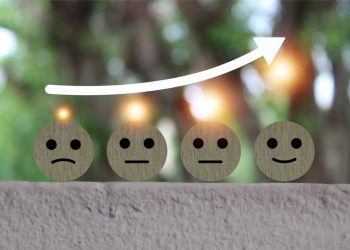 By Joan Verdon
By Joan Verdon
RISMEDIA, February 2, 2009-(MCT)-The ski industry around the country is responding to a new demographic that’s hitting the slopes in increasing numbers-senior skiers.
Baby boomers, part of the generation that first propelled skiing to mainstream popularity in the United States, are staying on the slopes for far longer, and in greater numbers, than anyone imagined possible a decade ago.
According to an annual study conducted by the National Ski Areas Association, the percentage of people ages 55 to 64 on the slopes has more than doubled to 9.2% since the 1997-98 ski season. And the number of skiers 65 and older has been inching up every year as well.
“Back in the 1980s and even the 1990s, people got to be 50, 60 years old and they just figured they were old and they stopped,” said Troy Hawks, spokesman for the National Ski Areas Association. Now, there are so many 70-plus skiers that many ski resorts have stopped offering lift ticket discounts for that age group.
Advances in ski technology are allowing skiers to stay active well into their 70s. And the demands of older skiers are shaping the industry’s products and services.
Ski Barn, a four-store retail chain based in Paramus, New Jersey recently invested in a $3,000 boot press that allows it to custom-shape ski boots to create extra space for bunions or other ailments of aging feet. The stores also can outfit older skiers with remote-controlled boot heaters; custom insoles for fallen arches; and shorter, hourglass-shaped skis that can make a 50-something skier feel like he or she is 20-something again.
On the slopes, “50 is the old 40,” said Ski Barn owner Ray Fallon. “There’s definitely plenty of 50-, 60- and 70-plus skiers out there.”
Fallon can relate to the needs of his over-50 customers. He’s 50, he’s been skiing for 30 years, and these days he doesn’t head for a day on the slopes without his custom-boot insoles and heated boot liners.
His father, Dick Fallon, 82, the founder of Ski Barn, skied throughout his 70s.
The Ski Barn also is selling more of the shorter, shaped skis that make downhill runs a bit easier for slightly over-the-hill athletes.
“They can carve right into a turn and can hold in ice,” Fallon said. “They give you more control, more fun. You can have a guy who now only skies eight to 10 times a year and still be able to ski at his advanced speeds from when he was younger.”
Rob Megrin, marketing director at the Mountain Creek resort in Vernon, N.J., says switching to the shaped skis is like “going from manual steering to power steering. That’s what the whole hourglass and shaped ski has done for the industry,” he said. “It has allowed people to ski with less effort, and that allows people to stay in the sport a little longer.”
Grooming technology also has reached a level, Megrin said, “that we haven’t seen before. When one of these machines makes a pass, and then you ski over it, it’s like, ‘Wow-OK, I can do this, I can do this for quite a while.'”
“I’m going to be 50,” Megrin said, “and I know that when I first started this sport, I never thought that I would be this active in it at this age.”
Mountain Creek still offers discounts for skiers 65 and older, but Megrin noted that the population at Mountain Creek skews younger than at other resorts because 60% to 70% of its visitors are snowboarders. But the resort does draw some mature snowboarders as well, Megrin said, adding that the director of the snow sports school is a snowboarder, and a grandfather.
“If you love skiing, you love it and you don’t want to stop. If I didn’t ski, I don’t know what I would do,” said Ski Barn customer Len Marshall, 71, a Paramus resident who has stayed on the slopes through heart-valve surgery and prostate cancer.
He makes skiing trips out west and said he sees many 70-plus skiers participating in the sport. At one ski trip in British Columbia, the guide was 78.
© 2009, North Jersey Media Group Inc.
Distributed by McClatchy-Tribune Information Services.










